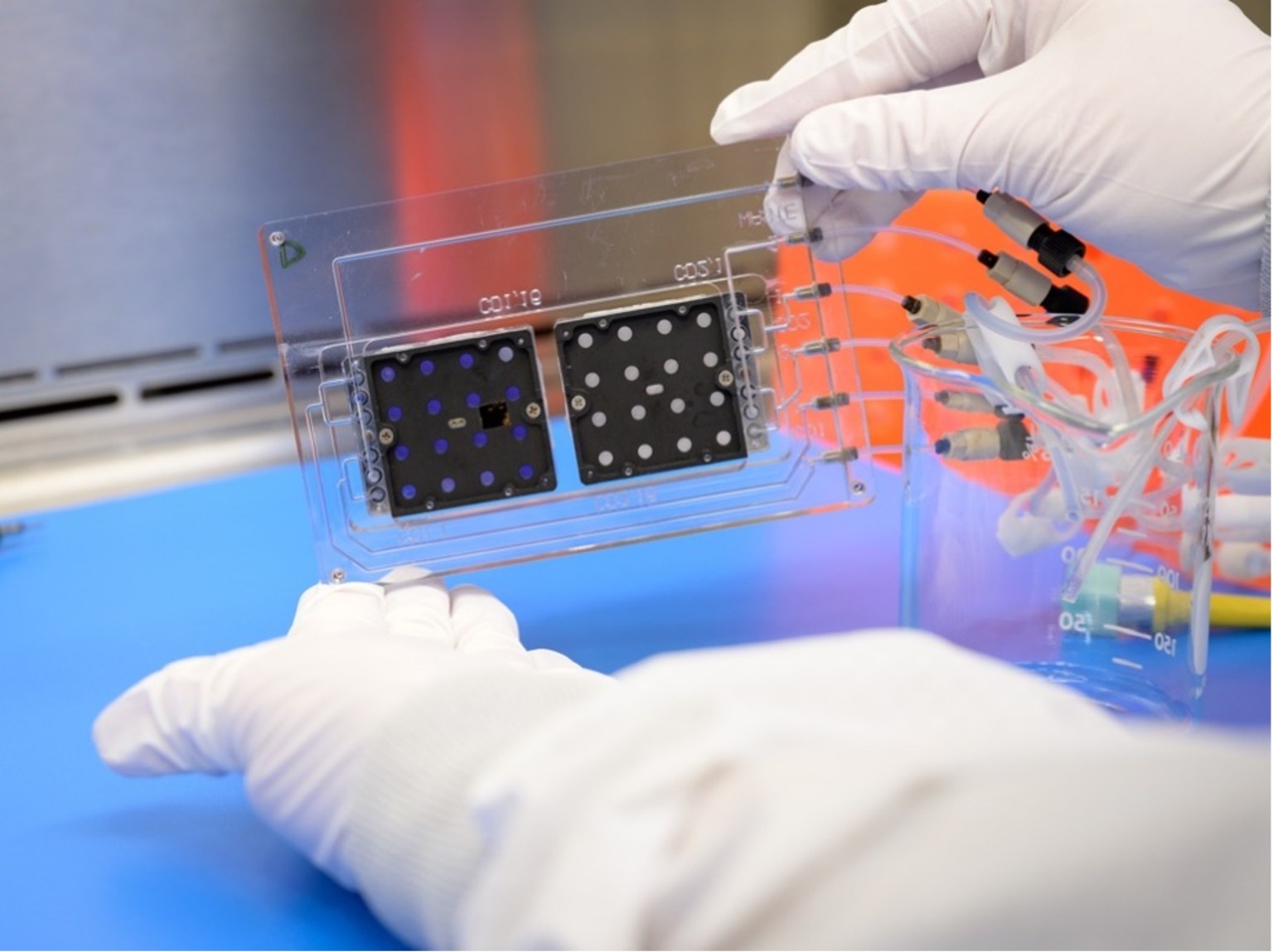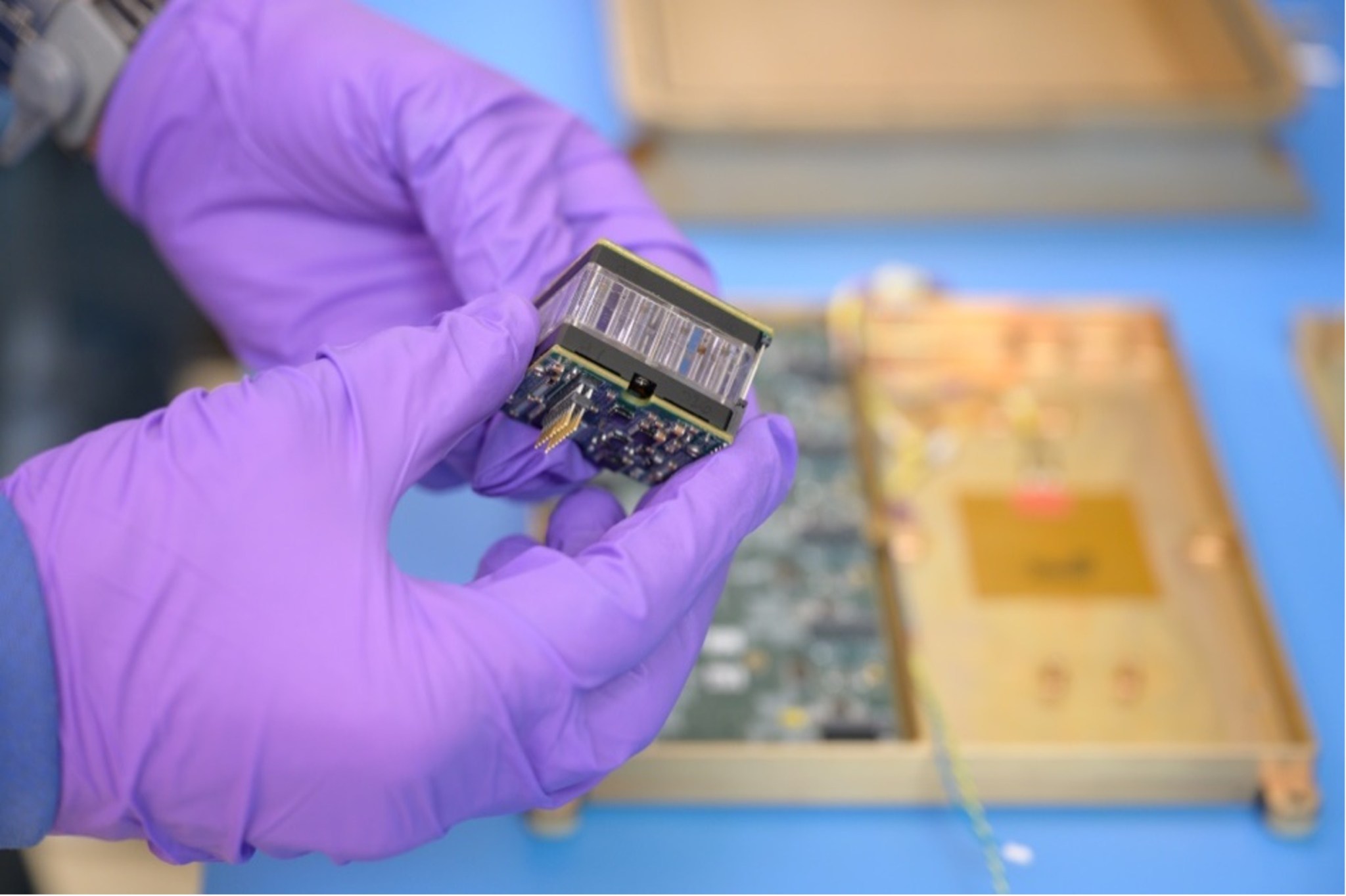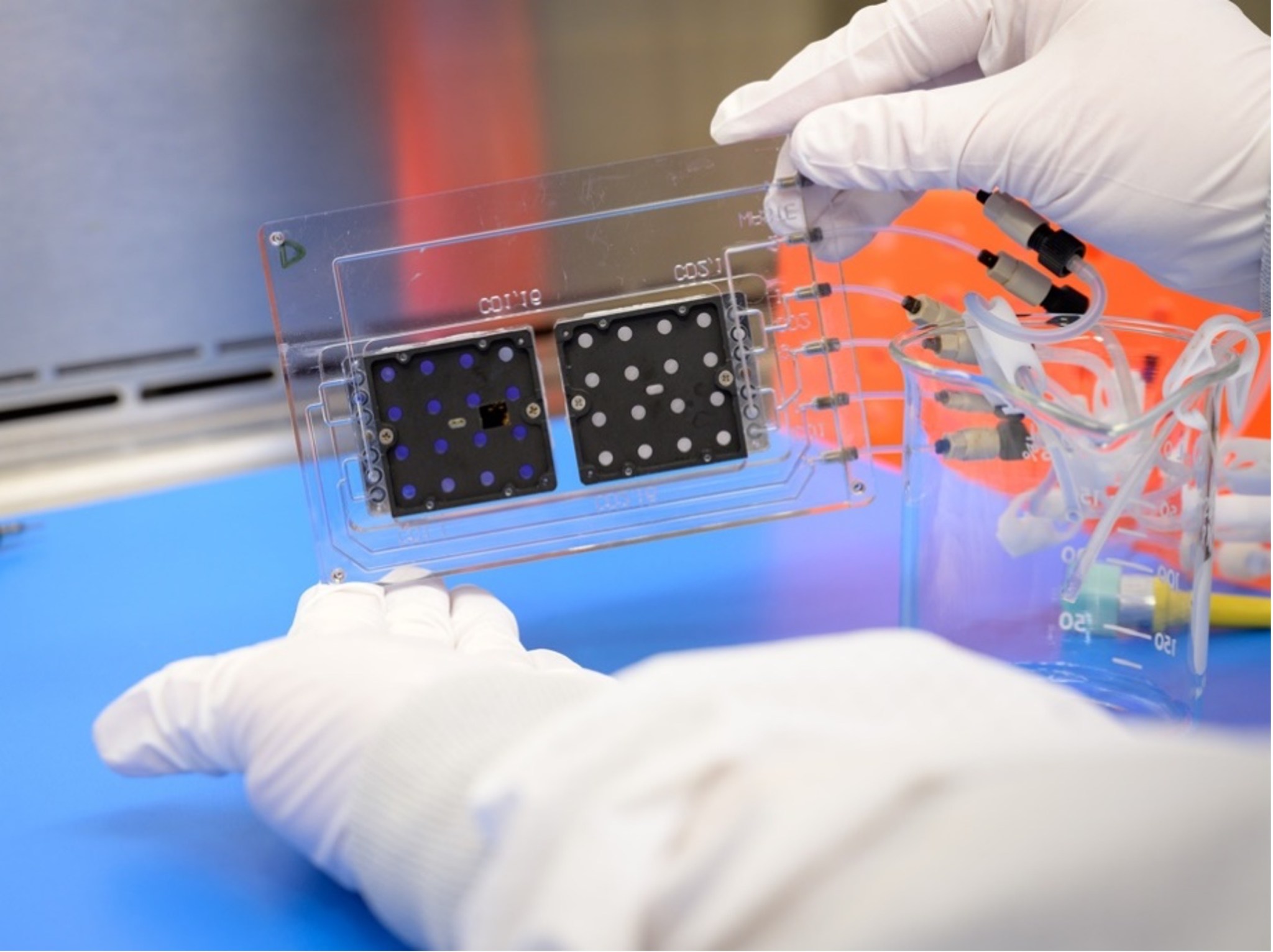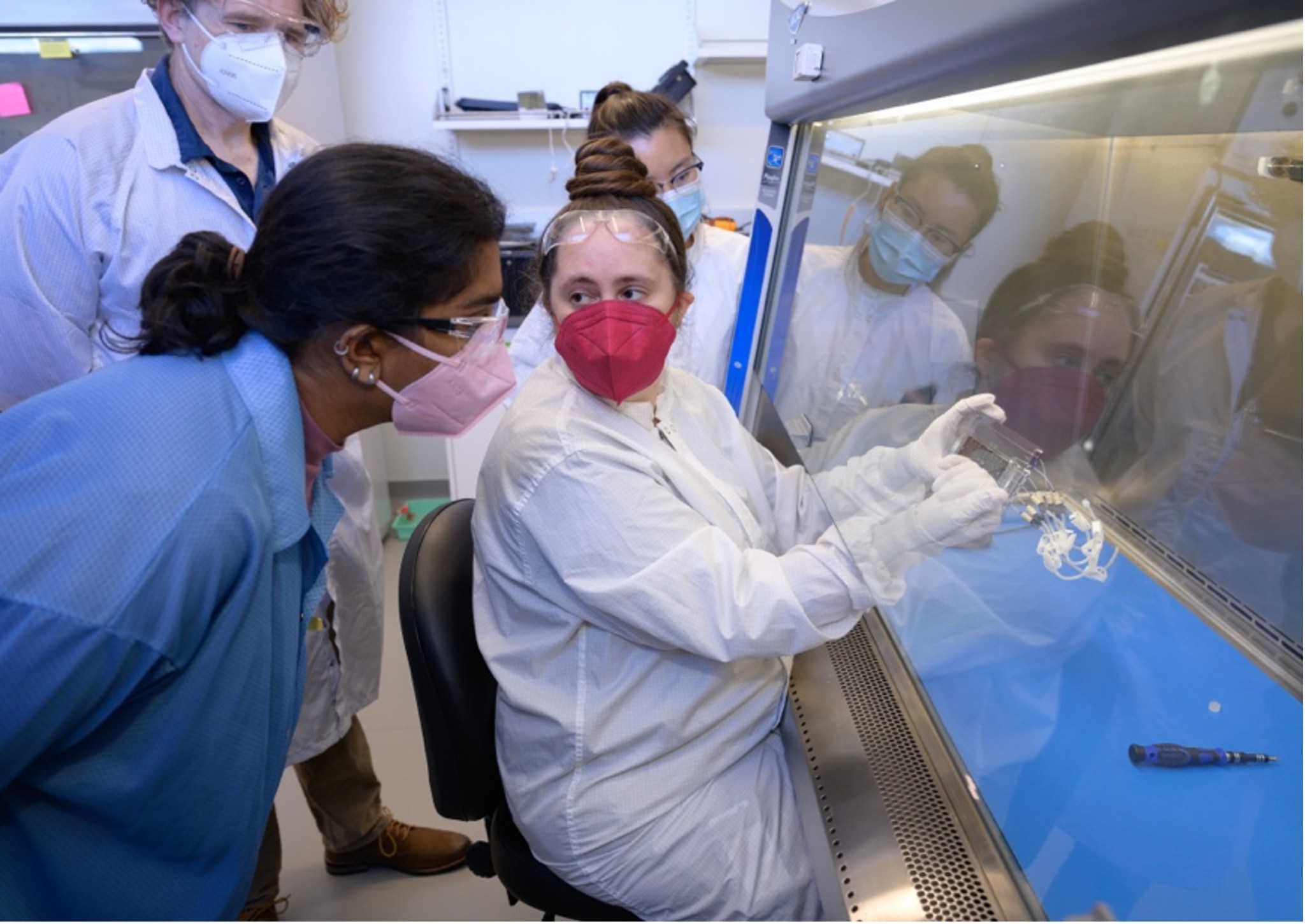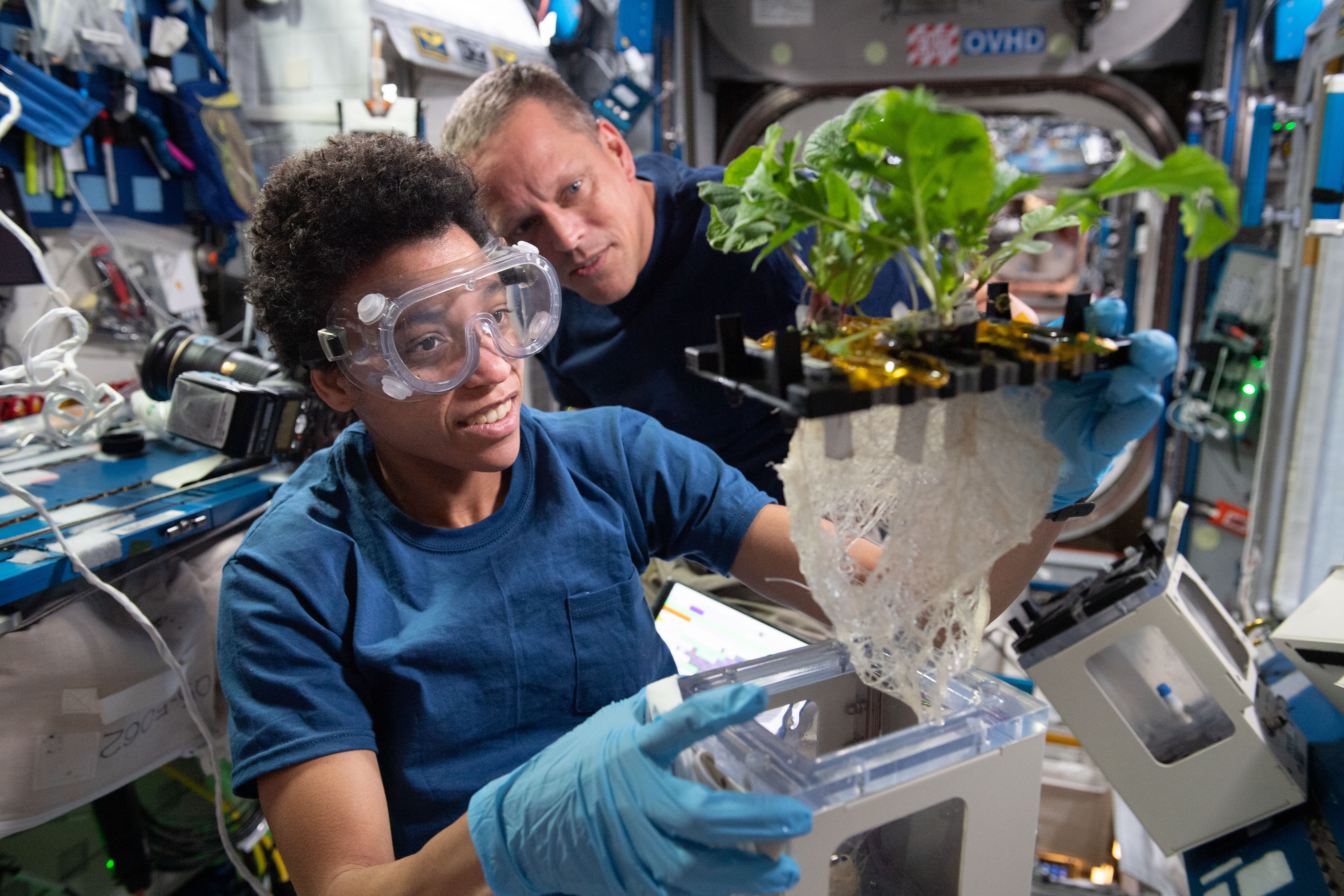PROJECT:
Lunar Explorer Instrument for space biology Applications (LEIA)
SNAPSHOT:
An autonomous microfluidic culturing system with CubeSat heritage teams up with two state-of-the-art radiation detectors to measure how biology responds to the radiation and reduced gravity environment on the lunar surface.
Humans are returning to the Moon for the first time in decades, and we intend to stay. NASA’s Artemis missions are preparing for a sustained human presence on and around the Moon, with the ultimate goal of sending humans to Mars. These deep-space destinations present health risks to astronauts that are qualitatively and quantitatively different from those associated with stays on the International Space Station (ISS). One of the most significant risks for astronauts venturing outside the protection of Earth’s magnetic field is ionizing radiation: Galactic Cosmic Rays (GCR), Solar Particle Events (SPE), and the “albedo” radiation produced by the interaction of space radiation with the lunar surface. Exposure to ionizing radiation can result in an increased risk of cancer, cardiovascular disease, and neurological impairment.
The Lunar Explorer Instrument for space biology Applications (LEIA) aims to provide empirical data to help define these risks by measuring the biological effects of lunar radiation and reduced gravity using a well-studied microbe whose DNA has a lot in common with ours: baker’s yeast. Remarkably, yeast and humans have hundreds of similar genes, including those important to DNA damage responses, so understanding the effects of stress on yeast in space will help us develop countermeasures to protect humans. As an added dividend, LEIA will obtain precise measurements of the radiation environment on the lunar surface at the South Pole, near the anticipated landing site for Artemis III—the mission that will return humans to the Moon’s surface.
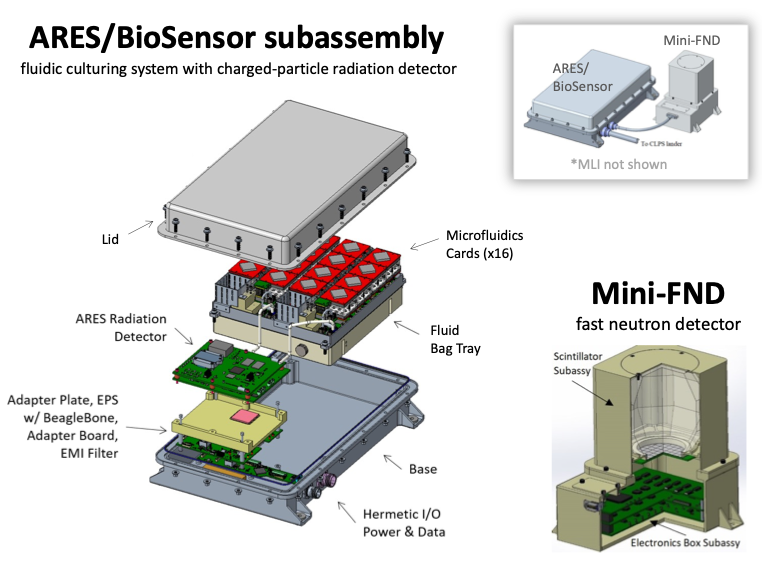
LEIA is a suite of instruments that work together to characterize the lunar radiation environment and the biological response to it. The biological instrument, the BioSensor, is based on the BioSentinel CubeSat developed at Ames Research Center as part of the Artemis I mission. The BioSensor has an autonomous microfluidic system in which yeast cells, kept in a dry dormant state for transit, are activated by adding a liquid culture medium to stimulate growth and metabolism over several days. The LEIA version of the BioSensor has 16 fluidic cards, each with 16 culture microwells, so the instrument can accommodate 256 samples and calibration standards. Each well is equipped with three Light-Emitting Diode (LED) lights, as well as a photodiode sensor to measure cell growth via optical density and metabolic activity using a color-changing oxidation-reduction (redox) indicator dye. Chronic, sublethal radiation damage to cells is a significant concern for astronaut health. The BioSensor detects these effects through changes in rates of metabolism and cell growth in the yeast.
Two radiation detectors will accompany the BioSensor as part of the LEIA suite. The Airborne Radiological Enhanced-sensor System (ARES), a radiation detector slated for use on the Artemis II and III missions, will measure time-resolved dose, dose rate, and energy deposition by charged particles from the solar wind and GCR. The Mini-Fast Neutron Detector (Mini-FND) will measure high-energy neutrons, which are a substantial component of lunar surface radiation and a significant risk to quantify for crewed missions. The Mini-FND is a miniaturized version of the International Space Station (ISS) Radiation Assessment Detector (ISS-RAD) FND. ARES was developed at NASA Johnson Space Center (JSC), and the Mini-FND is being developed by the Southwest Research Institute (SwRI) in Boulder, CO.
LEIA technology has roots in instruments with extensive flight heritage, yet several developments distinguish it from its predecessors. One example is the introduction of a “late-load” capability, enabling investigators to integrate the fluidic cards containing the yeast cells into the BioSensor at the end of the payload assembly. Late load allows fresh yeast cells to be flown, which mitigates the cell damage that occurs when yeast cells are stored in suboptimal environmental conditions during integrated lander testing and potential launch delays. This improvement ensures more direct measurements of the effects of the lunar surface environment.
The LEIA yeast strains, currently being developed by Principal Investigators (PIs) Mark Settles and Sergio Santa Maria at NASA Ames Research Center (ARC), represent a biotechnological development central to achieving the scientific aims of the mission. The LEIA experiments will include both strains flown on BioSentinel and additional strains engineered with modifications to DNA repair pathways, to provide data on how different components of cellular machinery interact to fix radiation-induced damage. In addition, LEIA will include yeast strains from the BioNutrients experiment, a project to develop microbial food sources that could provide astronauts with nutritional supplements produced on-demand during long-duration missions. Specifically, LEIA will study whether yeast engineered to produce antioxidants such as beta-carotene can maintain antioxidant production in the lunar environment. LEIA will also test yeast strains that include genes introduced to increase radiation resistance. Extensive research is underway to select flight strains that are robust enough to withstand pre-flight storage, launch, and transit, but sensitive enough to provide a measurable biological response to the lunar environment.
LEIA is supported by a Payloads and Research Investigation on the Surface of the Moon (PRISM) Grant and is scheduled for delivery to the Moon by the Commercial Lunar Payload Services (CLPS) program in 2026.
PROJECT LEADS:
Dr. Mark Settles and Dr. Sergio Santa Maria (PIs), NASA Ames Research Center (ARC)
SPONSORING ORGANIZATIONS:
NASA Biological & Physical Sciences (BPS) Space Biology Program; Exploration Science Strategy and Integration Office (ESSIO)

























